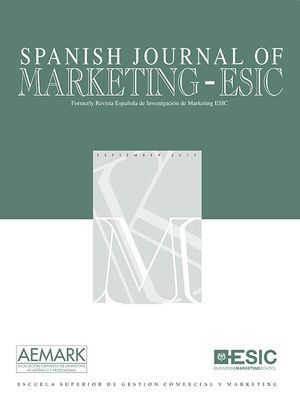La publicidad en televisión se está desarrollando más allá de los cortes publicitarios tradicionales. Esta tendencia requiere considerar cómo la publicidad y el contenido de la programación televisiva pueden utilizarse conjuntamente con fines comerciales. En este trabajo se presentan los resultados de una investigación que analiza, en un entorno real, los efectos cognitivos, afectivos y conativos de un formato de publicidad no convencional, la Telepromoción externa, frente a la publicidad más convencional, el Spot, sobre los diferentes perfiles sociodemográficos de las audiencias de televisión. También se plantea el análisis de una serie de variables relativas al individuo que potencialmente pueden ejercer alguna influencia sobre tales efectos. De esta manera se han podido aportar las necesarias evidencias empíricas para el desarrollo teórico de las formas no convencionales de publicidad en televisión, y justificar adecuadamente su aplicación en la práctica empresarial.
Television advertising is moving beyond traditional commercial breaks. This tendency requires to consider how advertising and television programming content can be used together in order to set commercial goals. This work presents the results from a research that analyzes, in a real environment, the cognitive, affective and conative effects of a non-conventional advertising format, the external telepromotion, as opposite to more conventional advertising, the spot. These results are presented differentiating between the different sociodemographic profiles of the television audiences. Also the analysis of a series of variables related to the individual that can potentially exercise some influence over such effects are showed. This way, enough empirical evidence for theorical development on non-conventional advertising on television has been provided, and so, arguments to justify its application in business practice.
Esta investigación ha sido financiada con el Proyecto de Investigación del “Programa para la Creación y Consolidación de Grupos de Investigación” (BOCM 11 de julio de 2006) de la Comunidad de Madrid y la Universidad Rey Juan Carlos.
Los autores agradecen los comentarios y sugerencias propuestas por los evaluadores anónimos a una primera versión de este trabajo.
Profesora Titular de Universidad. Universidad de Las Palmas de Gran Canaria. Facultad de Ciencias Económicas y Empresariales. Departamento de Economía y Dirección de Empresas. Edificio Empresariales. Módulo C. Campus de Tafira. 35017. Islas Canarias.
Profesora Titular de Universidad. Universidad Rey Juan Carlos. Facultad de Ciencias Jurídicas y Sociales. Departamento de Economía de la Empresa. Paseo de los Artilleros s/n. Campus de Vicalvaro. 28032. Madrid.
Profesor Titular de Universidad. Universidad Rey Juan Carlos. Facultad de Ciencias Jurídicas y Sociales. Departamento de Economía de la Empresa. Paseo de los Artilleros s/n. Campus de Vicalvaro. 28032. Madrid.





